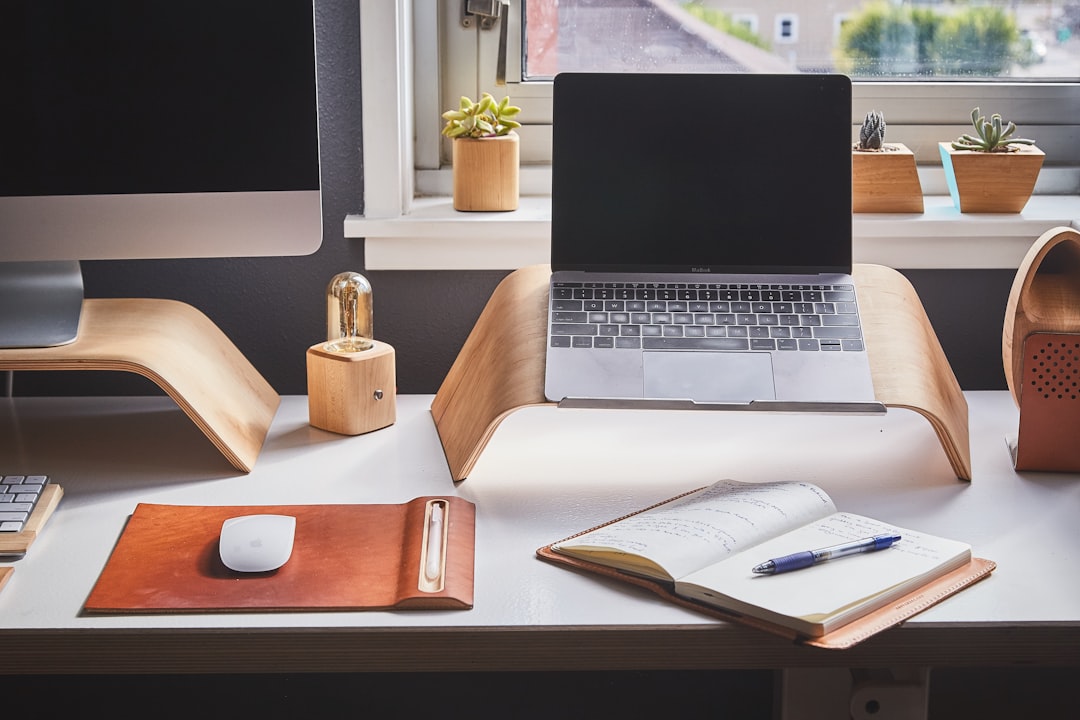Welcome to our blog post on creating an efficient and productive workspace at home. With the rise of remote work and the increasing number of people opting for flexible work arrangements, it is crucial to have a designated workspace that promotes focus, productivity, and overall well-being. In this blog post, we will guide you through the steps of setting up an ideal workspace that will help you stay organized, motivated, and goal-driven.
Working from home offers various benefits, such as flexibility, reduced commuting time, and improved work-life balance. However, without a proper workspace, it can be challenging to maintain productivity and separate work from personal life. By following the tips and strategies outlined in this post, you will be able to create a workspace that maximizes your potential and sets you up for success.
Whether you are a freelancer, a remote employee, or an entrepreneur running your own business, the principles we will discuss apply to all types of professionals working from home. So, let’s dive in and discover how to create an efficient and productive workspace that will enable you to thrive in your remote work journey.
Set up a designated workspace
Creating a designated workspace is an essential step in optimizing your productivity and focus while working remotely. Without a designated space, it can be easy to get distracted and lose motivation. By setting up a specific area solely dedicated to work, you can establish a sense of structure and routine that will help you stay on track and accomplish your goals.
When choosing a workspace, consider factors such as comfort, lighting, and noise levels. It’s important to find a space where you feel comfortable and can concentrate without any unnecessary distractions. If possible, try to find a quiet area in your home where you can minimize interruptions.
Investing in the right equipment and furniture for your workspace is crucial for maintaining proper posture and avoiding discomfort or injury. Ergonomic furniture, such as an adjustable desk and chair, can help ensure that you maintain a healthy posture and reduce the risk of developing musculoskeletal issues.
Additionally, consider investing in a good quality monitor, keyboard, and mouse that are ergonomically designed to reduce strain on your wrists and eyes. These small adjustments can make a significant difference in your overall comfort and productivity throughout the day.
Organize your workspace in a way that promotes efficiency and ease of use. Keep essential items within reach, such as pens, notebooks, and any other tools or materials you frequently use. Consider using storage solutions like shelves or filing cabinets to keep your workspace tidy and clutter-free.
Remember, your workspace should be a reflection of your professional mindset. Keep it clean, organized, and free from distractions. Avoid cluttering your desk with unnecessary items that can divert your attention and hinder your productivity.
When you step into your designated workspace, you should feel a sense of purpose and focus. It’s a physical representation of your dedication to your work and your commitment to achieving your goals. By setting up a designated workspace, you are setting yourself up for success in your remote work journey.
By setting up a specific area solely dedicated to work, you can establish a sense of structure and routine that will help you stay on track and accomplish your goals.
Invest in Ergonomic Furniture and Equipment
When it comes to setting up your designated workspace, investing in ergonomic furniture and equipment should be at the top of your priority list. Why? Because your physical well-being directly affects your productivity, focus, and overall work performance. By prioritizing ergonomics, you can create a comfortable and supportive environment that will allow you to work efficiently and minimize the risk of developing musculoskeletal disorders.
Start by choosing a chair that provides proper lumbar support and is adjustable to accommodate your height and preferred sitting position. Look for chairs with adjustable armrests and a swivel base for added flexibility. Remember, you’ll be spending long hours in this chair, so it’s crucial to find one that promotes good posture and reduces strain on your back and neck.
Next, consider investing in a height-adjustable desk that allows you to switch between sitting and standing positions. Sitting for extended periods can lead to a sedentary lifestyle and various health issues, including obesity and cardiovascular problems. By incorporating standing breaks into your work routine, you can improve your blood circulation, increase energy levels, and reduce the risk of developing chronic conditions associated with prolonged sitting.
In addition to a suitable chair and desk, ergonomic accessories like a keyboard and mouse can make a significant difference in your daily comfort and productivity. Look for keyboards that are designed to reduce strain on your wrists and fingers, such as those with a split or curved design. Similarly, ergonomic mice can help prevent repetitive strain injuries by providing a more natural grip and reducing the strain on your hand and wrist muscles.
Don’t overlook the importance of proper lighting in your workspace. Invest in adjustable desk lamps to ensure adequate lighting for reading and writing tasks. Natural lighting is also crucial, so try to position your workspace near a window to benefit from daylight, which can improve your mood, reduce eye strain, and enhance alertness.
Lastly, don’t forget about the importance of organizing your workspace. Clutter can be distracting and hinder your ability to focus. Invest in storage solutions like shelves, drawers, and file organizers to keep your workspace tidy and organized. Having everything you need within reach will save you time and prevent unnecessary distractions.
Remember, investing in ergonomic furniture and equipment is an investment in your well-being and long-term productivity. By creating a workspace that supports your physical health, you’ll be setting yourself up for success and ensuring that you can work efficiently and comfortably for extended periods.
Next, consider investing in a height-adjustable desk that allows you to switch between sitting and standing positions.
Establish a daily routine and schedule
When working from home, it is crucial to establish a daily routine and schedule to stay organized and focused. Without a structured plan in place, it can be easy to get overwhelmed or distracted. By establishing a routine, you can create a sense of normalcy and ensure that you are maximizing your productivity.
Start by setting specific working hours that align with your most productive times of the day. This will help you establish a consistent schedule and allow you to make the most of your energy and focus. Whether you are an early bird or a night owl, tailor your working hours to your personal preferences and optimize your productivity.
Next, break down your day into manageable blocks of time and assign specific tasks to each block. This will help you stay on track and ensure that you are making progress on your work. Consider using time management techniques such as the Pomodoro Technique, which involves working in focused bursts followed by short breaks, to enhance your productivity.
In addition to scheduling your work tasks, make sure to include time for breaks, meals, and physical activity. Taking regular breaks throughout the day can help prevent burnout and maintain your focus. Use this time to stretch, go for a walk, or engage in other activities that help you recharge.
To further optimize your routine, prioritize your tasks based on their importance and deadlines. Create a to-do list or use productivity apps to keep track of your tasks and ensure that you are staying on top of your responsibilities. By tackling the most important tasks first, you can set yourself up for success and minimize stress.
Lastly, be flexible and adaptable with your routine. While having a schedule is important, it is also essential to be able to adjust and accommodate unexpected changes or urgent tasks. Stay organized and be willing to rearrange your schedule when necessary to maintain productivity and meet deadlines.
Remember, establishing a daily routine and schedule is not about restricting your freedom, but rather about creating a framework that empowers you to work efficiently and achieve your goals. By implementing a structured routine, you can maximize your productivity, maintain focus, and ultimately succeed in your work-from-home endeavors.
By establishing a routine, you can create a sense of normalcy and ensure that you are maximizing your productivity.
Minimize Distractions and Create a Conducive Environment
When working from home, it is crucial to minimize distractions and create a conducive environment that promotes focus and productivity. By taking proactive steps to eliminate interruptions and create an optimal workspace, you can enhance your ability to concentrate on your tasks and achieve your goals.
Here are some strategies to help you minimize distractions and create an environment that supports your work:
1. Designate a Distraction-Free Zone
Choose a specific area in your home where you can set up your workspace. This designated zone should be free from distractions such as TVs, noisy appliances, or high-traffic areas. By creating a separate space dedicated solely to work, you signal to yourself and others that this area is meant for focused productivity.
2. Silence Your Phone and Disable Notifications
Notifications can be one of the biggest distractions when working from home. To maintain your focus, silence your phone or put it in a separate room. Disable notifications on your computer as well, so you’re not tempted to check social media or respond to non-essential messages during work hours.
3. Set Clear Boundaries with Family and Roommates
If you live with family members or roommates, it’s important to establish clear boundaries regarding your work hours and workspace. Communicate the importance of uninterrupted time and request their cooperation in minimizing noise and distractions during your designated work hours.
4. Reduce Visual Clutter
A cluttered environment can be visually overwhelming and hinder your ability to concentrate. Keep your workspace organized and free from unnecessary clutter. Invest in storage solutions such as shelves, bins, or file organizers to keep your supplies and paperwork neatly arranged.
5. Use Noise-Canceling Headphones
When working from home, you may encounter unavoidable noise from neighbors, construction, or other sources. Investing in noise-canceling headphones can help block out external distractions and create a more focused and peaceful environment.
6. Establish Clear Work Breaks
While it’s important to maintain focus, it’s equally crucial to take regular breaks to recharge and prevent burnout. Schedule short breaks throughout your workday, and use this time to stretch, get some fresh air, or engage in a quick relaxation activity. By incorporating breaks into your routine, you can maintain productivity without feeling overwhelmed.
7. Create a Visual Reminder of Your Goals
Stay motivated and goal-driven by creating a visual reminder of your objectives. Whether it’s a vision board, a list of goals, or inspirational quotes, having a visual representation of what you’re working towards can help you stay focused and motivated.
By implementing these strategies and creating a conducive work environment, you can minimize distractions and optimize your productivity while working from home. Remember, maintaining a disciplined and organized approach is key to achieving your goals and making the most out of your remote work experience.
Invest in storage solutions such as shelves, bins, or file organizers to keep your supplies and paperwork neatly arranged.
Utilize technology tools and resources
When it comes to working from home, technology can be your best friend. There are countless tools and resources available that can help you stay organized, focused, and productive. By harnessing the power of technology, you can streamline your work processes and make the most out of your remote work experience.
One essential technology tool for remote work is project management software. These platforms allow you to create and assign tasks, set deadlines, and track progress all in one place. With features like team collaboration and task prioritization, you can ensure that everyone is on the same page and working towards common goals.
Another valuable resource is video conferencing software. This technology enables you to connect with colleagues, clients, and team members in real-time, no matter where they are. Whether it’s a quick check-in or a brainstorming session, video conferencing allows for face-to-face interaction, fostering better communication and collaboration.
Cloud storage services are also crucial for remote workers. These platforms allow you to store and access files from anywhere, eliminating the need for physical storage devices. With cloud storage, you can easily share documents with others, work on projects collaboratively, and ensure that your files are securely backed up.
Communication tools such as instant messaging and email are essential for staying in touch with your team. These tools enable quick and efficient communication, making it easy to ask questions, share updates, and address any issues that may arise. By utilizing these tools effectively, you can maintain open lines of communication and keep the workflow running smoothly.
Additionally, there are numerous productivity apps and software available that can help you stay focused and organized. From task management apps to time-tracking tools, these resources can help you prioritize your work, manage your time effectively, and ensure that you meet your deadlines.
Remember to take advantage of technology tools and resources that align with your specific needs and preferences. Experiment with different tools and find what works best for you. By leveraging technology to its fullest potential, you can maximize your productivity and make the most out of your remote work experience.
Communication tools such as instant messaging and email are essential for staying in touch with your team.
Conclusion
In conclusion, creating an effective workspace at home is essential for maximizing productivity and achieving your goals. By following the steps outlined in this blog post, you can set yourself up for success and create a conducive environment for work.
First and foremost, it is important to designate a specific area in your home as your workspace. This will help you mentally separate work from leisure and create a sense of focus and concentration. Whether it’s a spare room, a corner of your living room, or even a dedicated desk in your bedroom, having a designated workspace will allow you to get into the right mindset for work.
Investing in ergonomic furniture and equipment is also crucial for maintaining your physical health and well-being. By choosing a comfortable and supportive chair, an adjustable desk, and proper lighting, you can avoid unnecessary strain on your body and prevent long-term health issues. Remember, your workspace is where you spend a significant amount of time, so it’s worth investing in the right tools to ensure your comfort and productivity.
Establishing a daily routine and schedule is another key aspect of creating an effective workspace. By setting specific working hours and sticking to them, you can create a sense of structure and discipline. This will help you stay focused and motivated throughout the day, as well as ensure that you have a healthy work-life balance.
Minimizing distractions and creating a conducive environment is essential for maintaining focus and productivity. Whether it’s turning off notifications on your phone, closing unnecessary tabs on your computer, or creating a quiet and organized workspace, eliminating distractions will allow you to fully immerse yourself in your work and achieve your goals more efficiently.
Utilizing technology tools and resources is also a great way to enhance your productivity. From project management software to time-tracking apps, there are countless tools available to help you stay organized, manage your time effectively, and collaborate with colleagues. By leveraging these resources, you can streamline your workflow and accomplish tasks more efficiently.
In conclusion, creating an effective workspace at home requires careful planning and attention to detail. By following the steps outlined in this blog post, you can optimize your home office and create an environment that promotes productivity, focus, and success. Remember, your workspace is not just a physical area, but a mindset and a way of approaching your work. Stay organized, stay motivated, and stay goal-driven, and you will undoubtedly achieve great things in your home office.





